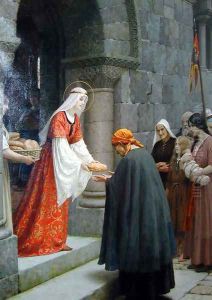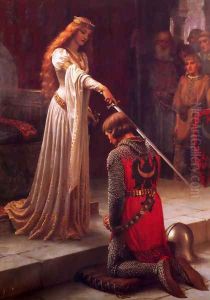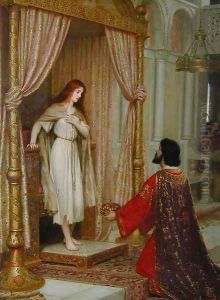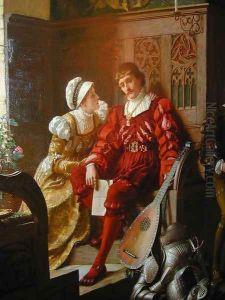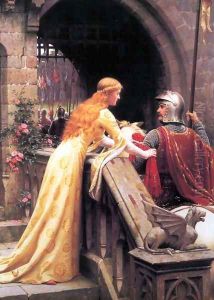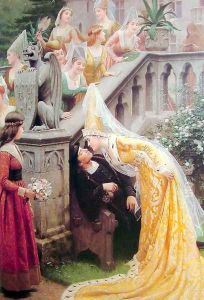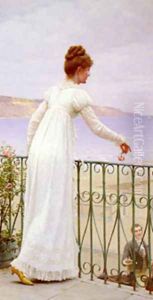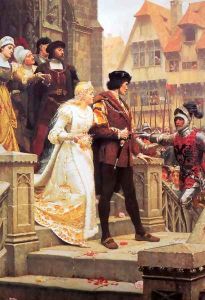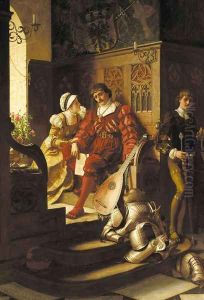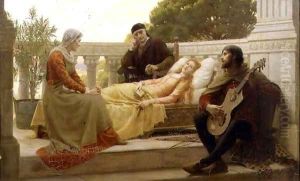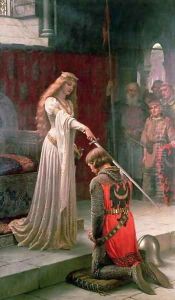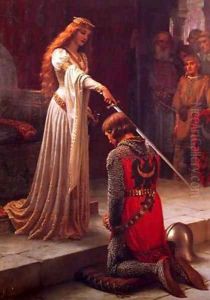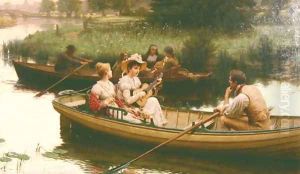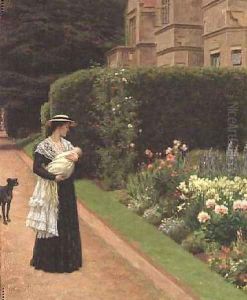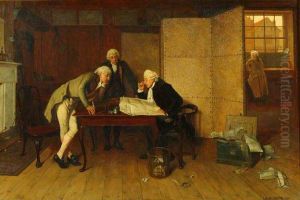Blair-leighton Edmund Paintings
Edmund Blair Leighton was a British painter associated with the Pre-Raphaelite and Victorian Romantic schools of art. He was born on September 21, 1852, in London, to Charles Blair Leighton, a successful artist in his own right. Edmund exhibited a strong interest in painting from an early age and was educated at the Royal Academy Schools, a prestigious institution that nurtured his developing style.
Leighton's work is characterized by its meticulous attention to detail, rich color palette, and romanticized portrayal of historical and medieval themes. Although not an official member of the Pre-Raphaelite Brotherhood, his art was influenced by the movement's principles, which emphasized a return to the abundant detail, intense colors, and complex compositions of Quattrocento Italian art.
Throughout his career, Leighton enjoyed considerable success and was renowned for his genre paintings that depicted chivalrous scenes and beautiful women in highly idealized historical settings. His famous works include 'The Accolade' (1901), which portrays a medieval knight being honored by a queen, and 'God Speed' (1900), a scene of a lady bidding farewell to her knight as he goes off to war.
Leighton's paintings were exhibited regularly at the Royal Academy, where he was a frequent exhibitor. His work resonated with Victorian audiences, who were captivated by the romantic and nostalgic vision of the past that his paintings evoked. Despite the later shift in artistic trends toward modernism, Leighton continued to work in his distinctive style until his death.
Edmund Blair Leighton passed away on September 1, 1922. Although not as widely recognized today as some of his contemporaries, his work remains popular among collectors and is often cited for its influence on the imagery of historical romance, particularly within the realm of popular media and literature.
